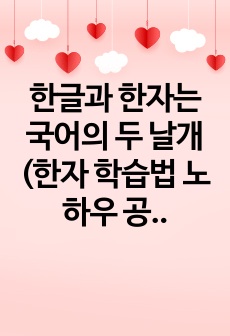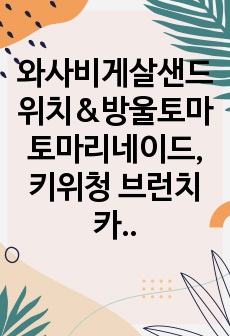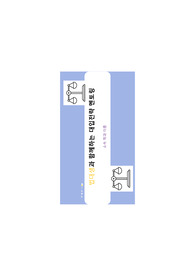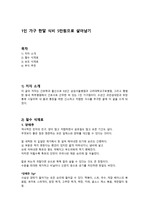Collecting and Writing about Literati Painting during the Early Chosŏn Period
* 본 문서는 배포용으로 복사 및 편집이 불가합니다.
서지정보
ㆍ발행기관 : 동양미술사학회
ㆍ수록지정보 : 東洋美術史學 / 1권
ㆍ저자명 : Burglind Jungmann
ㆍ저자명 : Burglind Jungmann
한국어 초록
미술사는 오늘날에 이르기까지 주로 정치적, 사회경제적, 문화적 맥락 속에서 연구되어 왔다. 그러나 새로운 접근방법에서는 후원자들과 그들의 성별, 사회적인 지위가 작품제작에 어떻게 영향을 주는가, 또는 미술이 특정집단의 사람이 살아온 환경 속에서 어떻게 소통과 자기표현 수단으로 사용되었는가에 대한 의문을 제기한다. 이러한 새로운 시도들은 조선시대 예술가들을 단순히 중국 수입품에 의존하는 이들로 보는 것이 아니라 새로운 관점에서 당시의 미술을 볼 수 있게 하였고 이를 통해 그들의 지적, 문화적 욕구를 표현하기 위한 영감으로써 중국미술의 경향을 어떻게 수용했는지를 보여준다. 조선 초기 회화 특히 안견의 <몽유도원도, 1447년> 와 신숙주의 「화기」는 조선전기 문인들이 아직 사회적으로 확고하게 자리 잡지 못한 시기에 자신들의 정체성을 형성하기 위해 중국의 이론적 담론, 도상 및 양식들을 사용하였는가를 보여준다. <몽유도원도>는중국의시인인 도잠(연명, 365-427)이쓴 「도화원기」 에서 비롯되었으나 도잠의 시와 중국 도상을 그대로 따르지는 않고 있다. 「도화원기」의 현실도피적 측면은 안평대군이 당시 처해있는 정치적 상황 속에서 해석할 수 있다. 양식적으로는 <몽유도원도>에서중국 북송대의 화파인 이곽파의특징을 찾을 수 있다.「화기」서론 부분의 한유와 백낙천에 대한 언급과, 소식을 상기시키는 「화기」끝부분의 철학적 담론은 안평대군의 골동수집 취향, 안견의 회화 양식과 당대의 지적 문화적 경향과 잘 부합된다. 곽희 양식에 대한 인식, 도화원기의 도상학, 한유의 미술품 수집에 대한 저술과 소식과 동시대인들의 미학적 문학활동은 고려 왕조의 어느 시기엔가 한국의 학자와 화가들에게 전달되었다. 조선초기까지 이러한 인식은 자신들의 정체성을 형성하고, 자신들의 사회적 지적 정치적 위치를 확고히 하기에 적합하다고 여기는 것은 무엇이든 선택하고 이용할 수 있었던 학식 있는 문인 집단에게 있어서 실질적이고 이론적인 소재가 되었다.영어 초록
Art has been examined in regard to its political, socio-economic, and cultural contexts. Questions of how patrons and how the gender and social standing of artists have manipulated art production, or how art was displayed or used as a means of communication and self-representation in a certain environment by certain groups of people have been raised. These new approaches better allow us to see Korean art under a new perspective – rather than seeing Korean artists as “dependent on Chinese imports”. We can now investigate how they used Chinese trends as inspiration for their artistic expressions based on their own intellectual and cultural needs. This article focuses on early Chosŏn painting, in particular An Kyŏn’s handscroll Dream Journey to the Peach Blossom Land of 1447 and Sin Sukchu’s text Hwagi or Record on Painting of 1445 in order to show how the cultural elite related to theoretical discourses, iconographies, and styles of ancient China Dream Journey to the Peach Blossom Land is based on a poem by Tao Qian (Yuanming, 365-427). His prose poem Journey to the Peach Blossom Spring presents what is probably the most beautiful Chinese image of paradise. This is partly reflected in the painting, but it does not follow Tao Qian’s poem and, for that matter, established Chinese iconography. While this is undoubtedly a reference to the Chinese literati tradition it can also be read in the context of the political situation of the writer, as a case of “Weltflucht,” of fleeing or avoiding the world. Stylistically Dream Journey to the Peach Blossom Land follows the Li-Guo school with its typically fantastic mountain shapes, curved outlines thickening and thinning with every turn of the brush, and its light effects. Sin Sukchu’s introduction recalling Han Yu and Bo Juyi and his philosophical discourse at the end of Hwagi echoing the thought of SuShi concord well with Prince Anp’yŏng’s antiquarian taste, An Kyŏn’s painting style and general intellectual and cultural trends of their times. Knowledge of the style, the iconography, the literary genre of writing about art collecting and of aesthetics reached scholars and painters on the Korean peninsula sometime during the Koryŏ period. By the early Chosŏn, this knowledge had become the practical and theoretical repertoire of the cultural elite from which they could select and use whatever they felt appropriate to shape their own identities and assert their social, intellectual and political position.참고 자료
없음태그
"東洋美術史學"의 다른 논문
 『비해당소상팔경시첩』과 조선 초기의 소상팔경도43페이지
『비해당소상팔경시첩』과 조선 초기의 소상팔경도43페이지 南宋盛行画《后赤壁赋》考12페이지
南宋盛行画《后赤壁赋》考12페이지 중국 남북조시대 자기 鷄首壺의 연원과 양식40페이지
중국 남북조시대 자기 鷄首壺의 연원과 양식40페이지 중국 위진 고분벽화의 연원 연구38페이지
중국 위진 고분벽화의 연원 연구38페이지 불탑에서 불상으로-중국 초기불상과 전통의 형성37페이지
불탑에서 불상으로-중국 초기불상과 전통의 형성37페이지 중국 고대 불탑의 기원과 발전37페이지
중국 고대 불탑의 기원과 발전37페이지 后赤壁賦圖 고찰16페이지
后赤壁賦圖 고찰16페이지


















